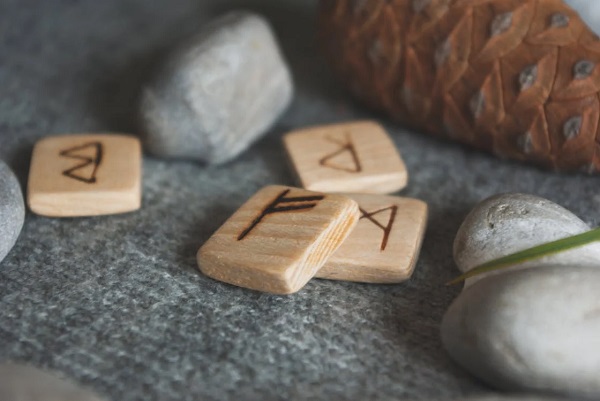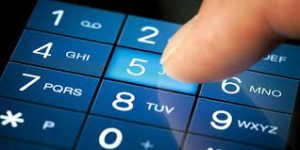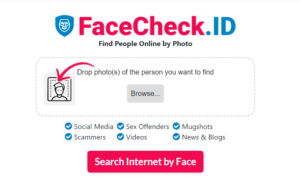Norse Runes and Viking Runes: A Ultimate Complete Guide

Norse runes are an ancient writing system used by Northern European Norse and Germanic peoples during and during the Viking Age. These symbols have enormous meaning and were employed not only for writing but also for spiritual, magical, and divinatory purposes. Understanding Norse runes offers insight into the Norse’s rich cultural and mythological past, as well as a fascinating window into their worldview.
Also Read:- Most Famous Norse Goddesses from Mythology- Blogs Year
We shall look at the origins, meaning, and application of Norse runes in this comprehensive book. We shall go into the Elder Futhark runic alphabet, which comprises of 24 characters. Each rune has a unique name, sound, and meaning, allowing for a more sophisticated and layered knowledge of the runic system.
We will also talk about the practical uses of Norse runes, such as runic inscriptions discovered on items, runestones, and old texts. We will also look at the function of runes in Norse mythology and magic, such as their associations with deities, rituals, and divination practices.
We will present examples and explanations of individual runes, their interpretations, and how they can be used for personal discovery and connection to Norse traditions throughout this guide. We’ll talk about runic ceremonies, divination methods, and ways to incorporate runes into modern spiritual activities.
It is critical to approach the study of Norse runes with an understanding of their historical and cultural background. While runes can be a source of personal inspiration, it is important to recognize the intricacy and depth of their significance in the Norse worldview.
This thorough introduction to Norse runes seeks to provide you with a comprehensive grasp of these mystical symbols and their role within Norse culture, whether you are a history enthusiast, a practitioner of Norse-inspired mysticism, or simply curious about ancient writing systems. Let us take this voyage into the world of Norse runes, deciphering their mysteries and discovering the wisdom they contain.
Nores Runes and Viking Runes
The names “Norse runes” and “Viking runes” are frequently used interchangeably to refer to the runic writing system employed by the Norse and Germanic peoples during and after the Viking Age. However, “Viking runes” is a more particular phrase that refers to the runic inscriptions and artifacts associated with the Vikings, who were seafaring warriors and explorers from Scandinavia during the Viking Age (about the 8th to 11th century).
The Elder Futhark is the most ancient and widely used runic alphabet, and it was utilized during this time period. It is made up of 24 characters, each of which represents a different sound and has its own significance and symbolism.
The runes were not only utilized for utilitarian purposes like as writing and communication, but they were also revered and thought to have magical abilities. They were associated with the Norse pantheon’s gods and goddesses and were used in rituals, divination, and protective acts.
While “Viking runes” highlight the historical context and specific time period of the Viking Age, “Norse runes” is a larger word that incorporates the runic system used by the Norse and Germanic peoples in general, both before and after the Viking Age. Norse runes do not only date from the Viking Age, but also from earlier and later times in Northern European history.
How Are Norse Runes Read
Norse runes, specifically the Elder Futhark runic alphabet, are read and interpreted in the same way as other ancient writing systems. Here’s a general guide to reading Norse runes:
Get acquainted with the runic alphabet:
The Elder Futhark is made up of 24 runes, each of which represents a different sound and has its own name and meaning. To grasp the importance of the different runes, it is necessary to learn their names and shapes.
Begin by studying a runic inscription or a runestone:
Runic inscriptions can be found on ancient books, artifacts, and stones. Begin by identifying and comprehending the distinct meanings of the runes in the inscription. Each rune has its own symbolic and phonetic meaning.
From left to right, read the runes:
Norse runes, like most writing systems, are read from left to right. The arrangement of the runes is important because it affects the interpretation and meaning of the inscription.
Consider the following:
When it comes to reading runic markings, context is everything. Runes can have different interpretations depending on the situation. Look for patterns, repeating runes, or other hints that could reveal the intended message.
Investigate runic divination methods:
Norse runes were employed for divination in addition to being used as a writing system. To get insights and advice, several ways such as drawing runes from a bag or casting them into a surface can be used. Each rune drawn or cast is interpreted depending on its unique significance and placement in the divination spread.
Investigate runic meanings and symbolism:
Dive further into the particular meanings and significance of each rune. Examine each rune’s qualities, affiliations, and mythological connections to acquire a more comprehensive understanding of its importance.
Norse Runes all symbols
The Elder Futhark, or Norse runic alphabet, is made up of 24 runic symbols, each expressing a different sound and holding its own meaning and symbolism. The Elder Futhark’s runes are listed below, along with their related names and transliterations:
- Fehu (F) – Wealth, cattle
- Uruz (U) – Strength, aurochs
- Thurisaz (Th) – Thorn, giant
- Ansuz (A) – Odin, divine inspiration
- Raido (R) – Journey, travel
- Kenaz (K) – Torch, knowledge
- Gebo (G) – Gift, partnership
- Wunjo (W) – Joy, pleasure
- Hagalaz (H) – Hail, disruption
- Nauthiz (N) – Need, constraint
- Isa (I) – Ice, stillness
- Jera (J) – Year, harvest
- Eihwaz (Ei) – Yew tree, endurance
- Perthro (P) – Mystery, fate
- Elhaz (Z) – Elk, protection
- Sowilo (S) – Sun, energy
- Tiwaz (T) – Tyr, justice
- Berkano (B) – Birch, growth
- Ehwaz (E) – Horse, partnership
- Mannaz (M) – Man, humanity
- Laguz (L) – Water, flow
- Inguz (Ing) – Fertility, new beginnings
- Othala (O) – Ancestral property, heritage
- Dagaz (D) – Day, breakthrough
FAQs Norse Runes
What are Norse runes?
Norse runes are an ancient writing system used by the Norse and Germanic peoples of Northern Europe. The runic alphabet, known as the Elder Futhark, consists of 24 symbols that represent specific sounds and carry individual meanings and symbolism.
What were Norse runes used for?
Norse runes fulfilled several functions. Runic inscriptions on items, stones, and manuscripts show that they were primarily utilized for writing and communication. Because runes were regarded sacred and had magical abilities, they were employed in rituals, divination, and protective acts.
What is runic divination?
Runic divination, also known as runecasting or runic readings, is a method of receiving insight, guiding, or answering questions by using runes. The interpretation is based on the unique meanings of the runes and their position in the divination spread, and other methods, such as drawing runes from a bag or casting them onto a surface, are used..
Can anyone learn to read and use Norse runes?
The answer is that anyone can learn to read and use Norse runes. It entails learning the runic alphabet, comprehending the meanings and connotations of each rune, and being acquainted with runic divination procedures. Developing a deeper understanding of the runes and their uses requires practice and perseverance.
Are Norse runes still used today?
Individuals interested in Norse mythology, spirituality, or cultural history still respect and use Norse runes. While less often utilized for everyday writing, they are still used for artistic purposes, personal discovery, and connection to Norse traditions.
Can I get a rune tattoo?
Rune tattoos are popular among persons who are interested in Norse symbolism and culture. It is, nonetheless, critical to approach runic tattoos with respect and knowledge. Thoroughly research the unique rune and its importance, and make sure the design is culturally and historically authentic. Consultation with an experienced tattoo artist or Norse rune expert can assist ensure a suitable and meaningful tattoo design.








